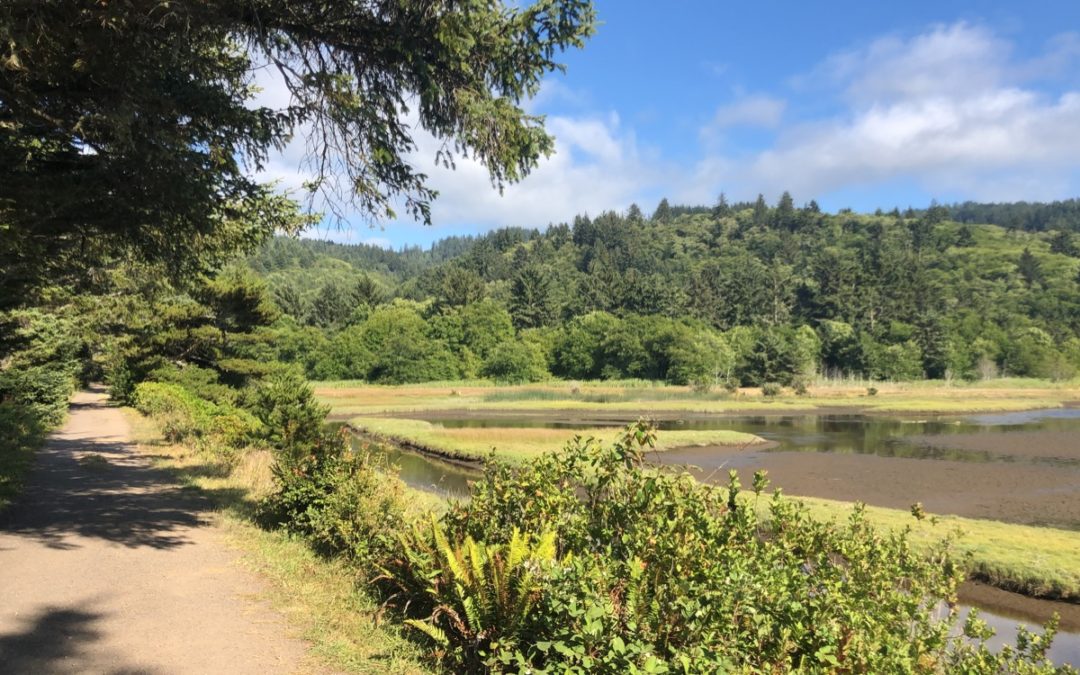Have you heard about mindfulness? It’s a term that has been popping up a lot recently, from medical journals to social media. The concept and practice of mindfulness however is nothing new. In fact, the basics of what mindfulness is all about has been something humans have practiced, and benefited from, for many thousands of years with the first recorded evidence of the practice tracing back to 1500 BCE, in the Hindu tradition. Today, in the United States, the cultural traditions most frequently associated with mindfulness are Buddhism and Yoga, which comes to us through the Hindu tradition, however, the principles of mindfulness can be found in all religious and spiritual practices that involve setting aside time to find stillness and peace within yourself. It can also be practiced outside of a spiritual experience, in honoring the cosmic miracle of life on Earth, and its origins through peaceful and intentional observation of nature, while sitting on a log.
Why has this practice become an important part of so many different cultures over thousands of years? Well, it’s not because anyone found the act of noticing the way a leaf rustles in the breeze an outrageously exciting experience (particularly when compared to catching some theater at the local amphitheater, or getting the top score on the local laundromat’s pinball machine). Very different people, from very different periods in history have embraced mindfulness in many cases because of the positive benefits to physical and mental health, and improved overall sense of wellbeing. Physical benefits like, relaxed muscle tension and improved quality of sleep. Mental and Emotional benefits including improved resilience to stress, improved regulation of emotions and an increased overall sense of wellbeing.
Another reason mindfulness has found its way into the huts and highrises of humanity comes from the diverse and numerous ways folks can practice it. Based on your cultural tradition, how much bend you’ve still got in your knees, if spending time outdoors is something that motivates you and whether or not you fall asleep within seconds of lying flat and focusing on your breath, you will be able to find some form of mindfulness practice that works for you!
For example, opportunities to practice mindfulness can range from sitting still on a cushion and observing the mental and emotional phenomena bouncing around your mind, and the stillness and peace you can find between them. Or, if you’ve got a bad back, maybe lying down in a supported position and trying deep breathing exercises while bringing awareness to the sensation of your diaphragm doing its part to fill and empty your lungs of vital oxygen and house-plant nourishing CO2. On the other end of the stillness spectrum includes opportunities to practice involving physical movement. Practices like Yoga and Mindful Walking use the perception of movement, the physical sensations that follow, in addition to observing your internal mental and emotional space to explore the possibilities of mindfulness.
Despite all of the options available in practicing mindfulness, many folks are unfamiliar or uncomfortable with the practice. Conditioned by the ways that our lives have become increasingly connected, with our attention primed for constant notifications, buzzes, beeps and alarms, it is even harder but more important that we explore a mindfulness practice. When our brains are used to this kind of environment, we shouldn’t blame ourselves, or attribute any psychic discomfort we feel to a lack of willpower or insufficient self-discipline. When sitting down for the first time in our lives, with the only item on the agenda basically being, “Do nothing, see what happens next”, our minds ask us within seconds, “Are you sure this is a good idea? Maybe something more interesting is happening on social media”. For many people trying a mindfulness practice for the first time, they may not be prepared for what those first few sessions can be like if you are, possibly, in a bit too deep with screen-time. I can speak from personal experience that when you’ve got troubles on the mind, or a looming deadline, or a bad social media habit, that sitting without distraction might seem like the last thing you want to do.
You should expect to crawl before you run, when it comes to mindfulness. Set reasonable goals with your initial sessions, expect to face more than a few urges to get up and grab your smartphone, and keep it to 5 minutes or less. The good news is that even if you don’t get past crawling, with just 1 or 2 minutes at a time, you still benefit through the attempt and practice of giving that part of your cognitive capacity a bit of a workout.
If you are interested in learning more about how you can start your own mindfulness practice, specifically how to practice through walking with mindfulness in nature, Join Tillamook County Wellness on Saturday May 21st 9:00AM – 10:30AM for a guided mindfulness walk at Sitka Sedge Natural Area. The guided walk and instruction session will give you a taste of what mindfulness is all about and send you home with materials you can use to start your own mindfulness practice. One lucky attendee will receive a free Oregon-State-Parks annual parking pass. Parking is free, although limited, so arrive early, carpool if you can, cross your fingers for sun and of course, dress for rain.
This is the first group walking event in a series of monthly events. Watch and register for these free activities on social media and the shared Community Calendar at tillamookcountywellness.org.
You can learn about other steps you can take along the varied paths toward improved health and wellbeing by checking out the Tillamook County Wellness “This Way to Well-Being” map and resource guide.
AUTHOR: Brett Buesnel, AmeriCorps VISTA at Tillamook County Community Health Center
Other wellness questions? Email us at info@tillamookcountywellness.org. For more local health and wellness information, visit www.tillamookcountywellness.org or follow Tillamook County Wellness on Facebook and Instagram.

